What to see the facade? This question usually occurs during the construction of a frame house or insulation of an old brusade or log dacha.
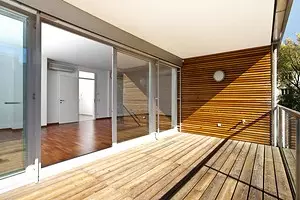
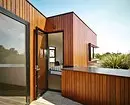
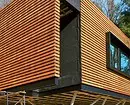
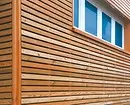
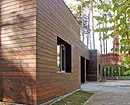
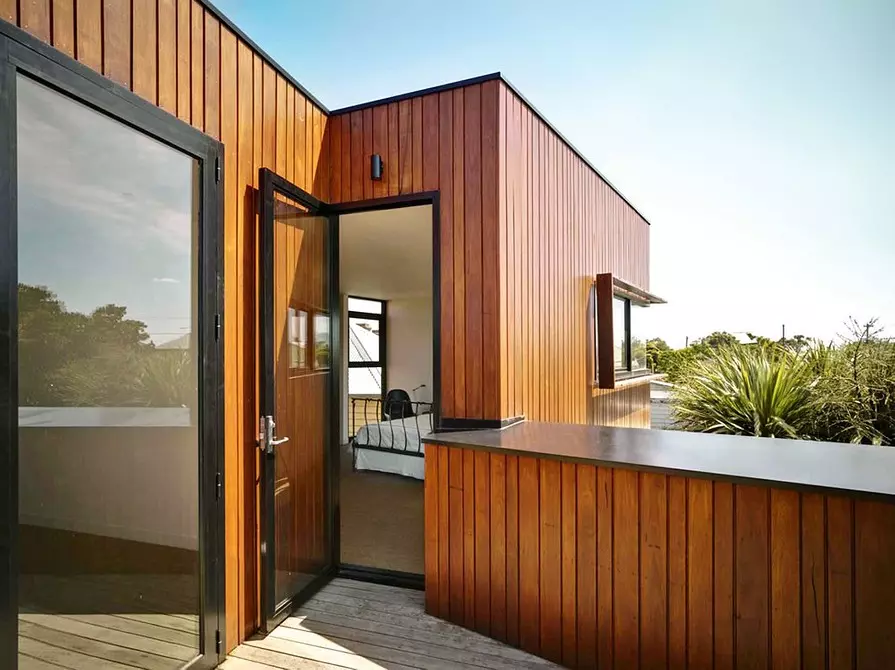
Planken's covering perfectly fits into the concept of a new type of country house - with a flat exploited roof and enlarged area of glazing
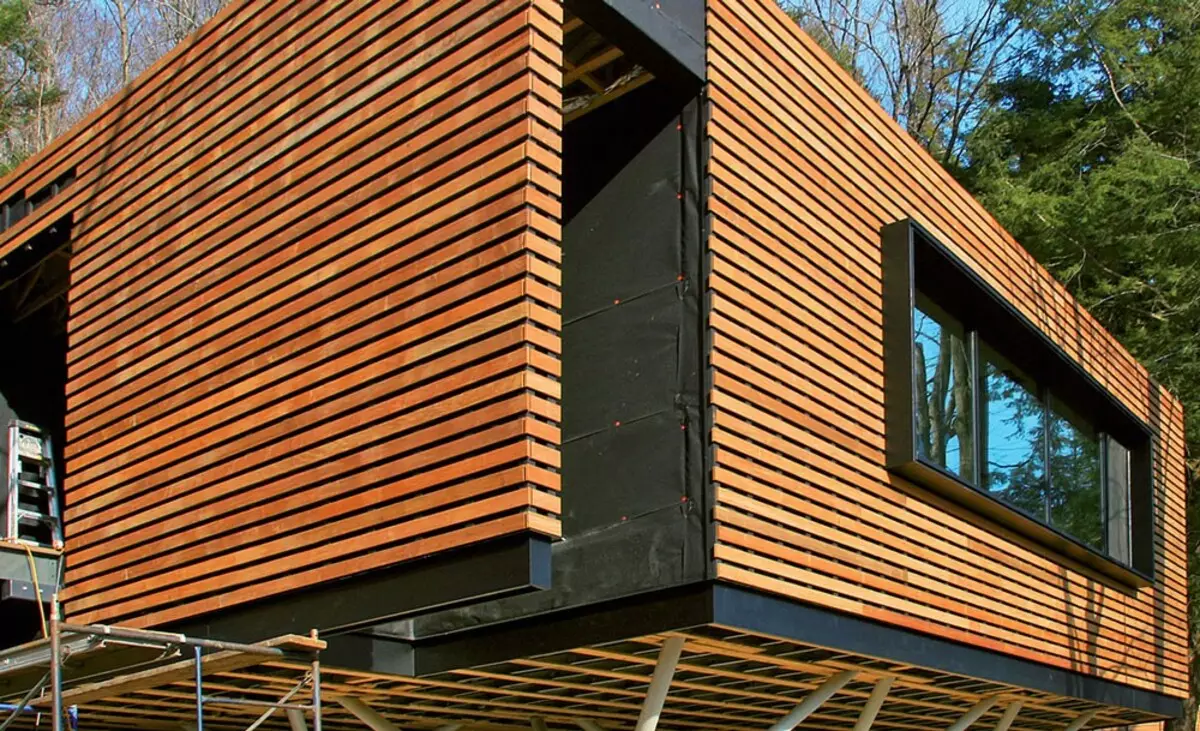
The movements are often separated by short sections of the slats. This is a rather laborious process, but as a result, the illusion is created that the wall is composed of wide BRUSEV
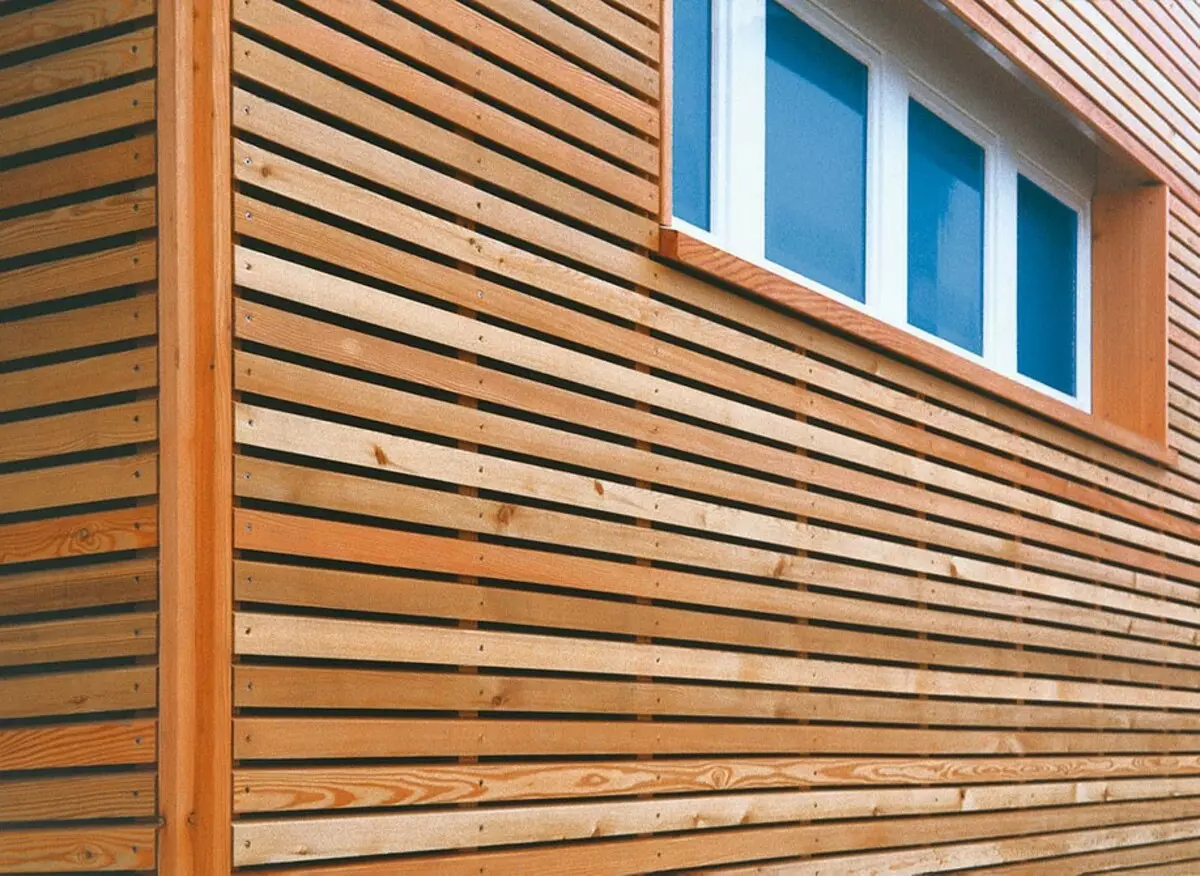
Corners can be issued using vertical rails, such a way is simpler, but the second provides a more spectacular appearance
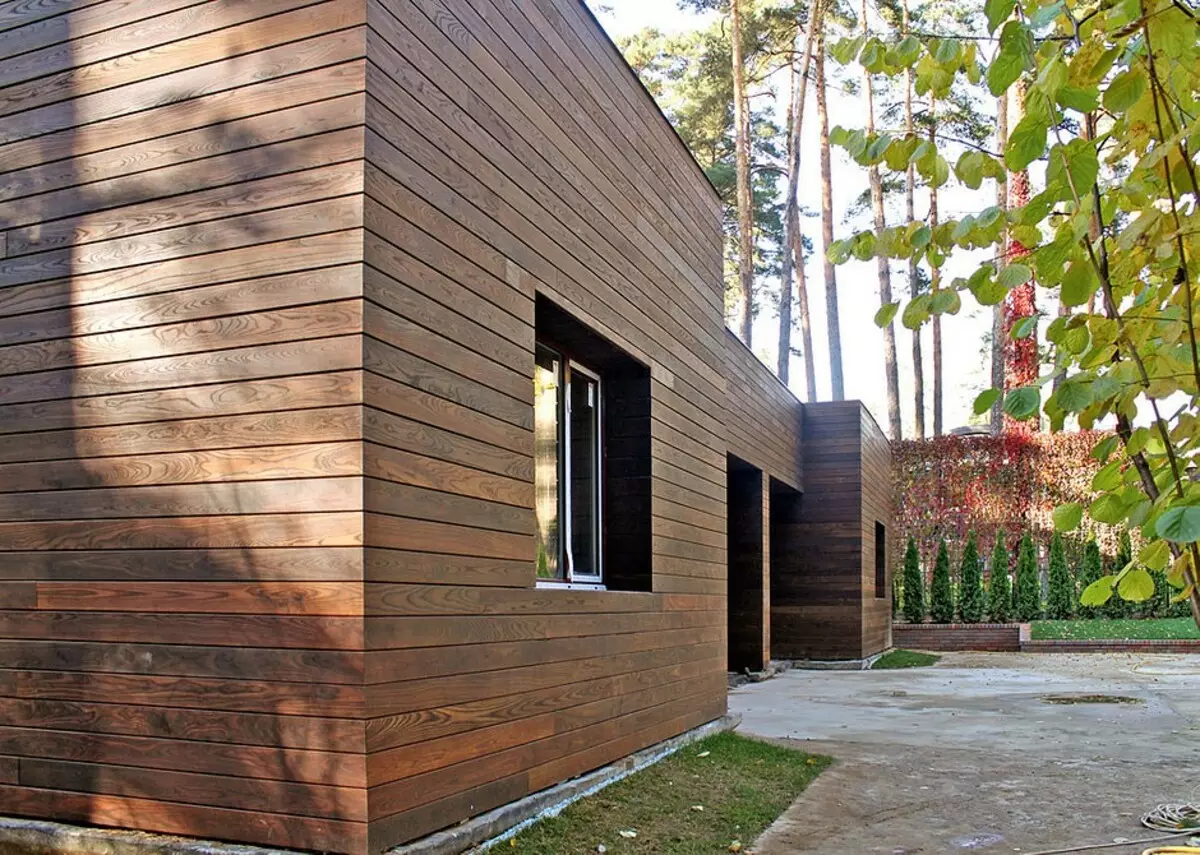
You can roll off the horizontal strips, reflecting them at an angle of 45 °
Sometimes the trim prefers the plaster and when the block buildings are erected. Give the house unusual and elegant appearance will help relatively new material - wooden plaquen. Let's talk about his features and rules of installation.
By Planken, they call the unpleasant rails and boards designed to cover the vertical surfaces and the creation of decorative fences - pergol, terraced walls, etc. The main feature of the front planks is that they are mounted with gaps - so it is possible to avoid swelling surfaces at moisture. What else does the material differ from the lining, timber imitation and logs?
Specificity of Planken
The specificity of the plaquena is not only in the absence of puzzle compounds, but also in a special form of section: distinguish with straight and beveled edges. The beveled edge allows you to make gaps between the boards are less noticeable. In all cases, the ribs are smoothed, and the plastic is often not only sharp, but also grind. In straight edges, the grooves are sometimes selected for fastening clemmers - such a plaquen is designed for vertical mounting.
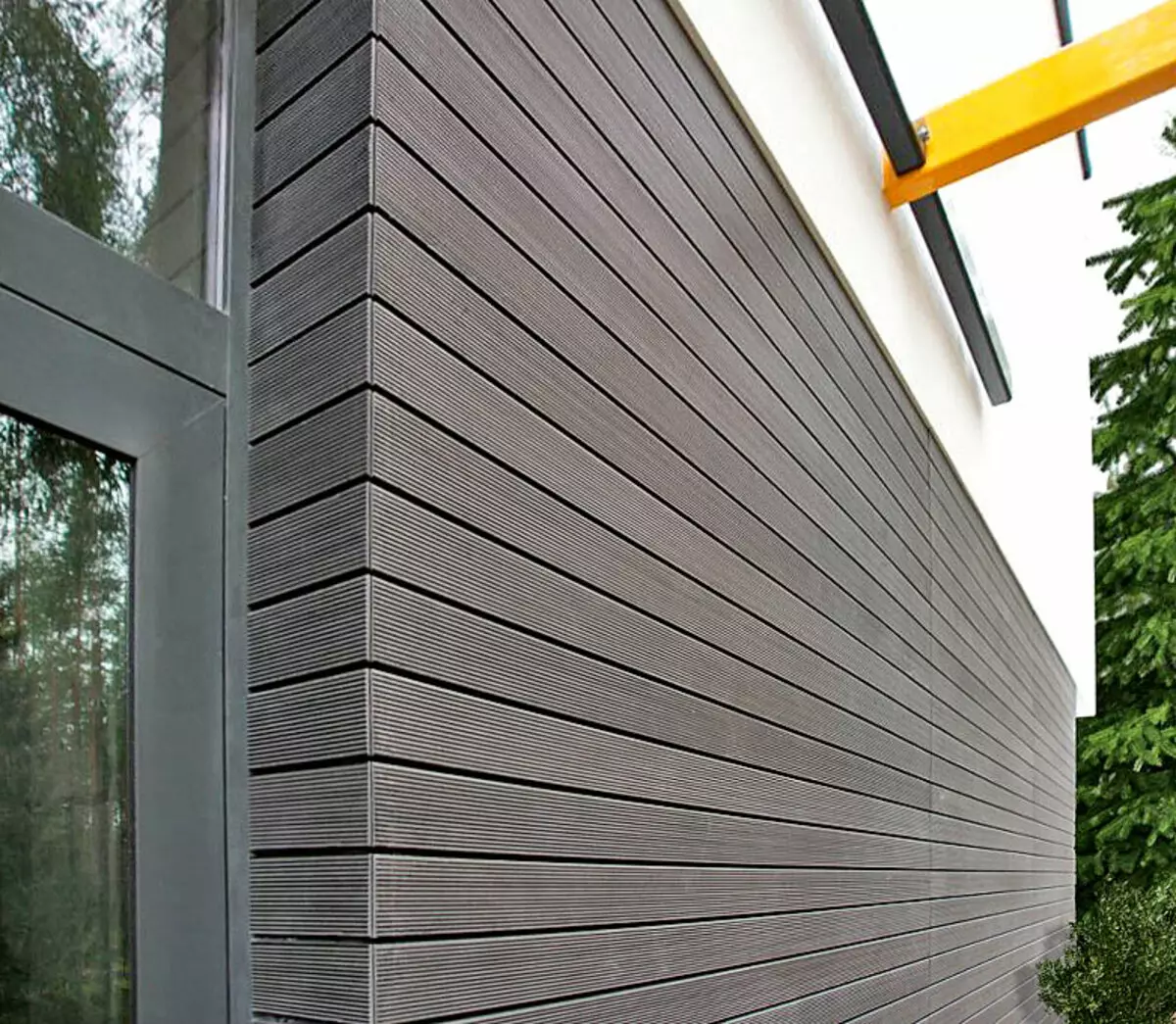
Photo: "Top House"
However, if you need to give the facade "Structivity", the gaps increase
In the production of plaquen, only high-grade wood resistant to rotting and decorative rocks - Siberian larch, cedar, ash. (True, many firms on request can make planken from low-cost pines and spruce.) The width of the pins varies in the range of 50-120 mm, the thickness is 15-28 mm, and the length can be 2, 3, 4 and 6 m.
Larch Planken is one of the most affordable, and it can be bought in stock (without prior order). As a rule, before assembling, the material is impregnated with linen or special synthetic oil (Brita, Varathane, Osmo, etc.) to give a saturated golden brown color. Some firms offer an impregnated (impregnated by an antiseptic under pressure) and the plaquen painted in the factory conditions, completed with the details of the root and the fastening system. The warranty on such a trim is at least 5 years.
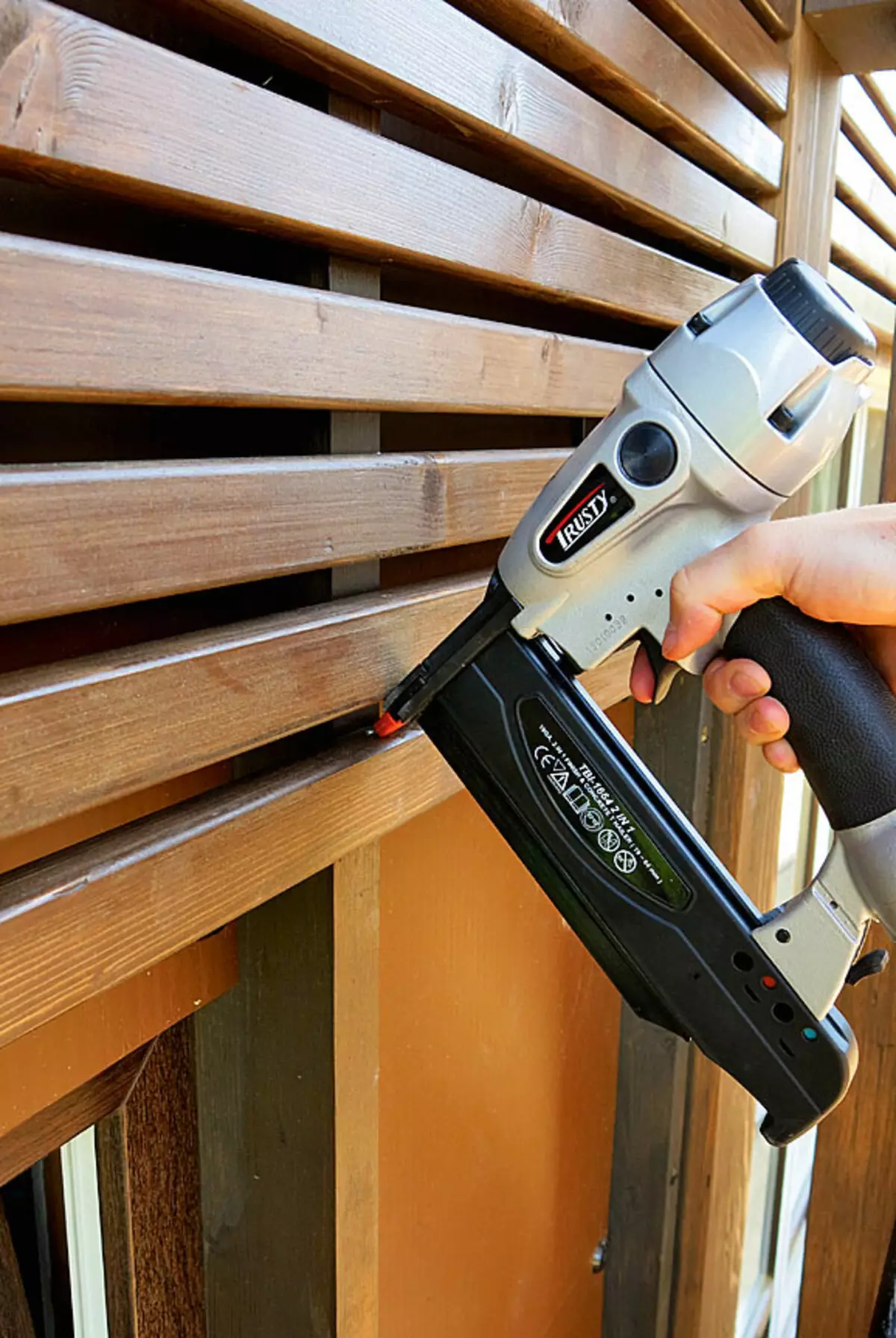
Photo: Trusty-Tools
Accelerate Installation Allows Building Neuler (Nail Pistol)
As defensive decorative coatings for wooden plaquen, resistant to atmospheric influences lesing varnishes, polymer lazuries, as well as special terraced oils are used
Planken from heat-treated wood is not too popular due to quite high cost. However, this material has a lot of advantages: it is dense, possesses water-repellent properties and is practically not subject to rotting. In addition, heat-treated boards have a dark color throughout the thickness, which means that mechanical damage will be less noticeable. Finally, heat-treated sawn timber is not prone to warp, while ordinary boards may well be a story.
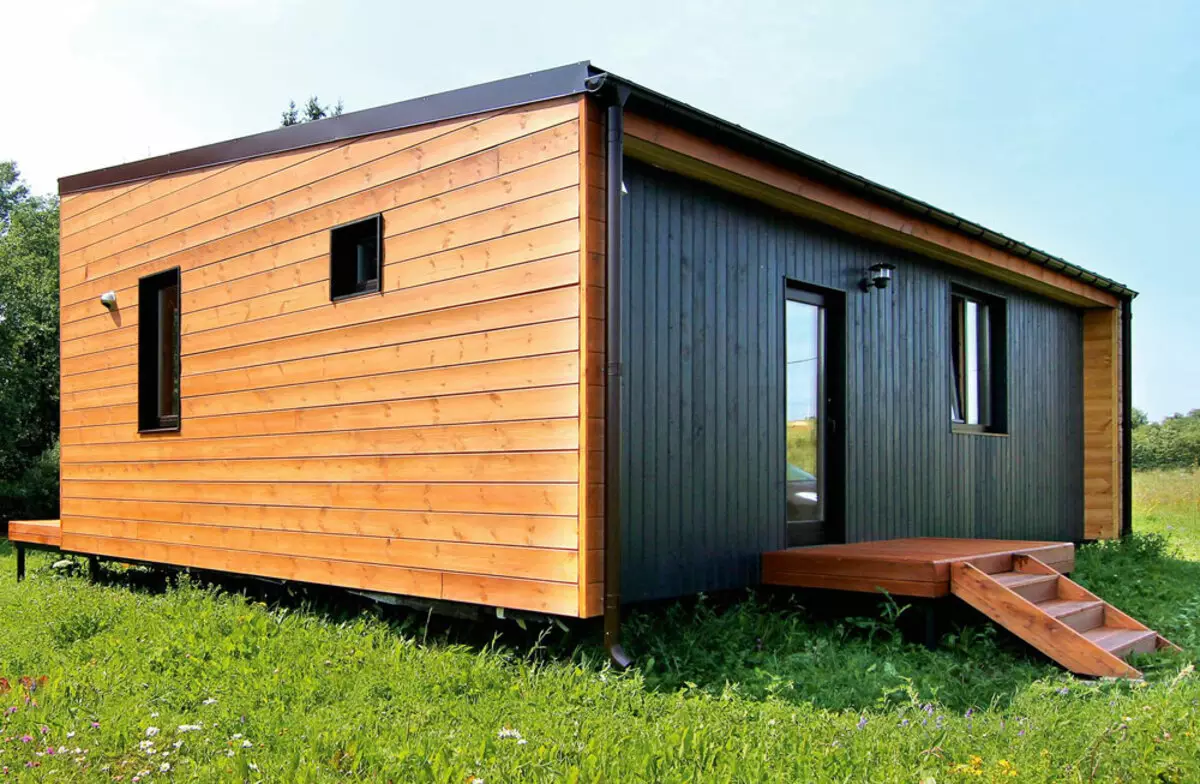
Photo: "House-Ark"
When the facade is trimmed, you can combine the rails of different widths and colors, as well as vertical and horizontal installation.
Planken from DPK (wood-polymer composite) is obtained by extrusion from a mixture of polymer resins and wood flour with the addition of dye. Such products are not blocked, racks for atmospheric influences and mechanical damage, but not too decorative: while manufacturers are not successful to imitate the texture of the tree. To revive the face of the facade, the surface of the panels make ribbed. Dust accumulates on such walls, and they will have to wash at least once a year. In addition, composite plaquen is quite thin (10-15 mm), which means it will be necessary to mount more frequent doom and extremely thoroughly align it.
Ventilated facade
Planken sheath refers to the discharge of mounted ventilated facades. The main elements of such structures are the cladding itself and the carrier frame (lamb). In addition, there is usually a hydraulic material (special film or water-repellent coating plate), under which the insulation or carrier wall may be located if it is made, for example, from foam blocks and does not need additional insulation.
In the standard design of the mounted facade for the removal of moisture from the surface of the hydraulic protection and the walls of the wall corresponds to the clearance under the lining defined by the shap. However, in the case of the plaquena, the wall is ventilated and through the numerous slots between the boards. On the one hand, it is good, because the wall does not threaten the overvaluation. However, the skin practically does not protect against wind and atmospheric moisture; Moreover, it does not always completely hide the basic surface of the wall from views. In connection with this, specific requirements are imposed on the share.
Planken is allowed to assemble both horizontally and vertically. In the first case, as a rule, products with a beveled edge are used, in the second - with a straight line. The magnitude of the gaps between the boards varies from 8 to 25 mm
The hydraulic protection material helps not only prevent wetting and blowing the wall, but also create the necessary dark background for plaquena. That is just the majority of vapor-permeable polymeric films (roofing and facade membranes) do not withstand the effects of UV rays, and their life on the outdoors is 3-6 months. The use of these materials in this case is an error.
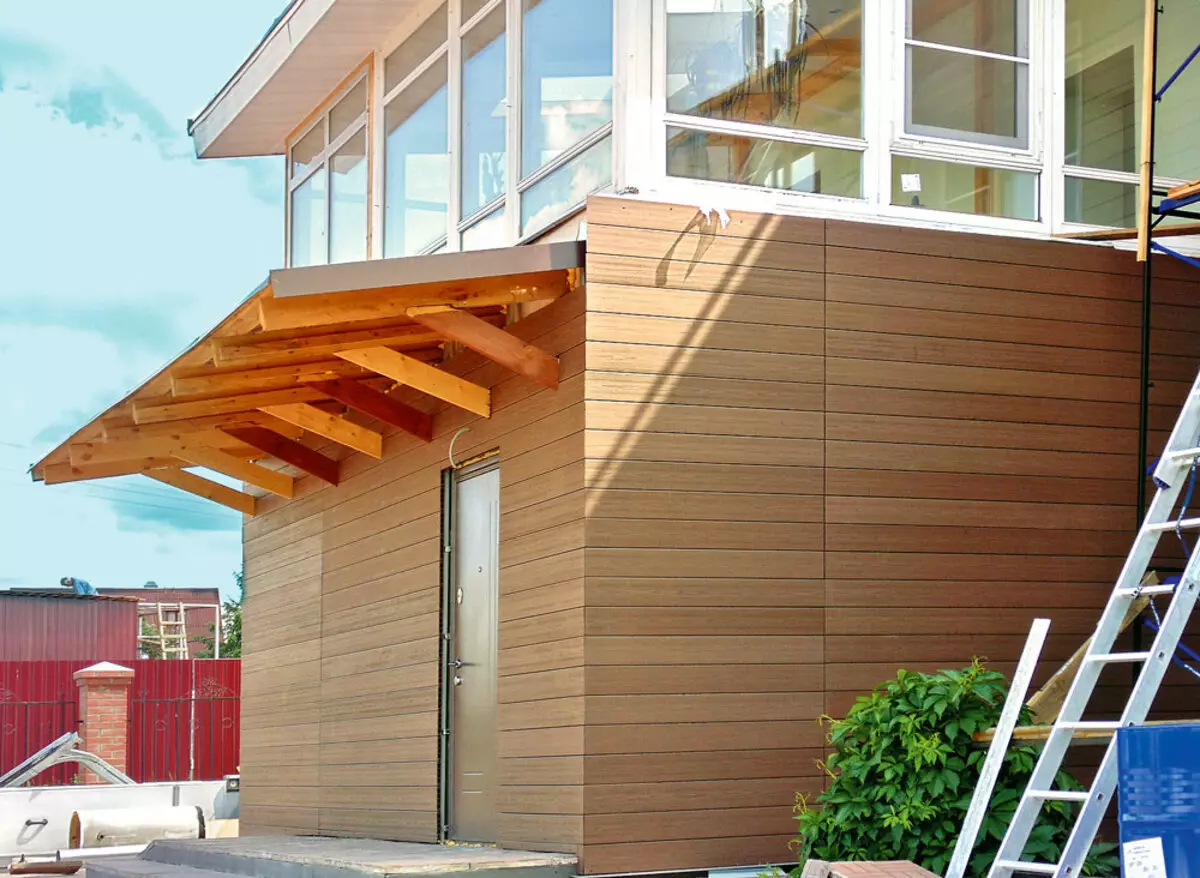
Photo: Decing Hall
Composite plaquen practically does not absorb water and, accordingly, does not increase in size, which allows you to mount the parts with minimal gaps (the bevelled edges are not required)
Under the plaquen, only special membranes are allowed, such as UV Fasade (DuPont), Delta-Fassade and Delta-Fassade S (Dörken), and it is clearly followed by the manufacturer's recommendations. Say, the Delta-Fassade film is suitable for ventilated facades with open seams between elements of the facing, if the width of these seams does not exceed 20 mm, and the total area is 20% of the area of the entire facade. Application is more resistant to ultraviolet and the more durable Delta-Fassade s membrane makes it possible to increase the relative area of open slots 2 times.
When using plaquena with a bevelled edge, providing good protection against ultraviolet, non-flammable materials based on the walls based on the walls, for example, Housewrap Firecurb (TYVEK) or Izoltex NG ("Aya") for waterproofing the walls.
Under the plaquen, you can also have windproof stoves (Isoplaat and analogs), but there is one nuance: their green surface can peck through the joints - it will only hide it with a bevel at an angle of 60-75 ° with the edge mounted horizontally and with gaps of not more than 6-10 mm (depending on the thickness of the boards).
Rival hydraulic strips are fixed with roofing nails, orienting vertically or horizontally, but in any case, providing an overheat at least 10 cm; The jokes are required to sneak special (also atmospheric) scotch.
The insulation under the plaquen must have reduced water absorption and resistance to blowout, but be vapor permeable. Most experts recommend using hard hydrophobized stained wool plates, such as Valt Tts (Rockwool) or WAS (Paroc), which is not less than 0.30 mg / (M • h.). The big advantage of the materials of this group is that they are nonsense.
The bumbly is usually performed from a perfected larch bar with a cross section of 30/40/50 × 40/50 mm, tinted in the color of the plating boards or a longer tint. The pitch of the bars should not exceed 60 cm. You can collect the frame of steel galvanized profiles, but they will have to paint with a bitumen varnish or enamel - will it be possible to make it qualitatively? Yes, and the advantages of the steel frame when wearing a low-rise building are dubious: it is not easier to align it than wooden, and he can hardly last longer. Well, the "eternal" doome of aluminum powder coating profiles will cost 4-5 times more expensive wooden.
Subtleties of mounting
Plankin's boards can be attached to the doom of conventional galvanized nails or bladed self-drawing: if you gently "build" the caps on the stretched lace, they can even become a kind of facade decoration. And yet, from the point of view of aesthetics, hidden fasteners are preferable - special plates and clamping beammers (for boards with grooves). Fastener is not completely hidden - it can be seen through the slots, so you should buy not just galvanized products, but painted in the dark color so that they do not get into the eyes.
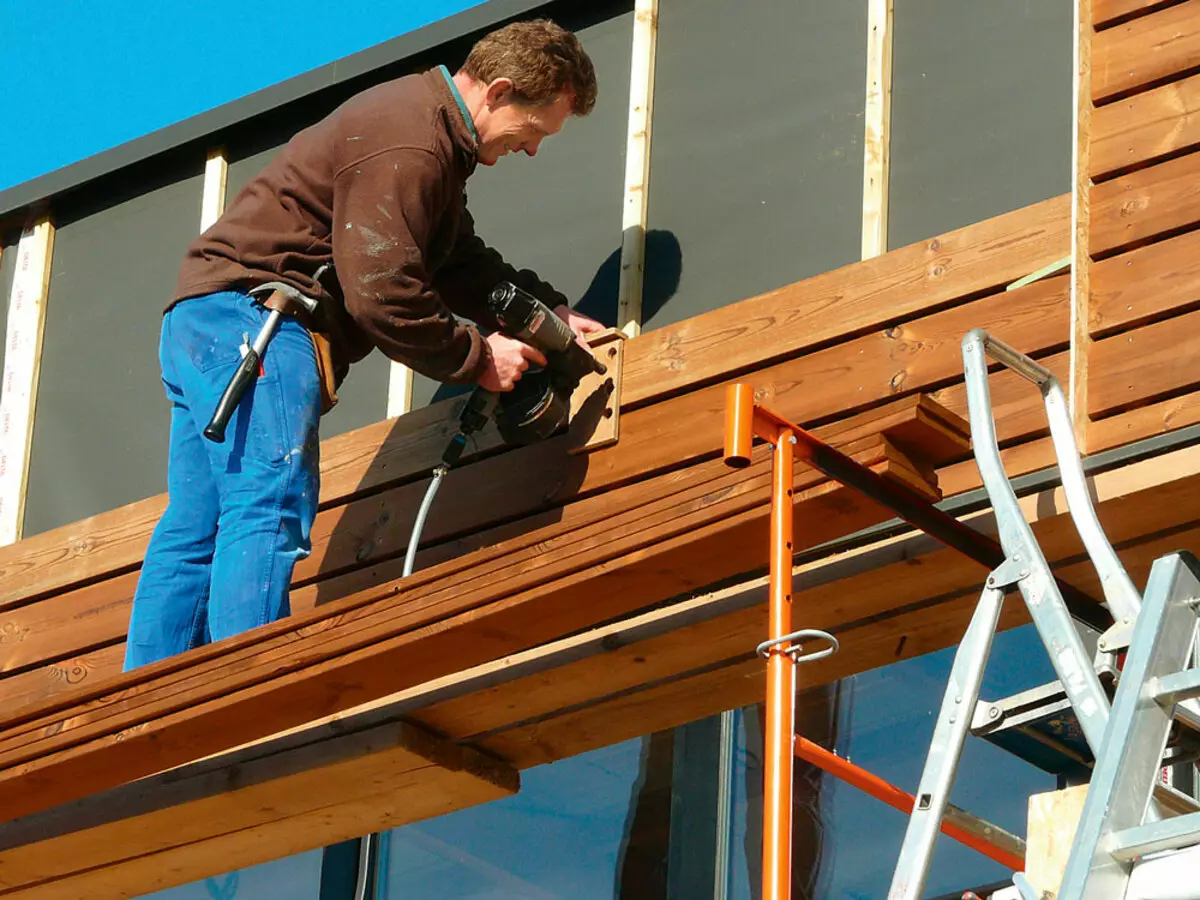
Photo: Dörken.
When attaching slats with self-draws or nails, it is necessary to use a template, otherwise the facade will look inactively. The distance between the panels is specified using temporary support dies, but the position of each third row is checked by the level.
A difficult task is to align the boards, because the new row can not be opened on the previous one. Laser and bubble levels come to revenue, as well as control rails and lining, allowing to monitor the uniform of the gaps.
Under the plaquen it is recommended to place a mosquito net, otherwise there is a risk that the space under the trim is captured by the wasps. The grid is fixed by the stapler to the brucks of the labels with a significant overwear
Another nuance is that Planken's lining does not involve the use of linings on the corners and framing of openings (platbands and sloping planks). When performing angular joints of the board, it is required to clean under 45 ° ("on the Us") and accurately drive to each other. The outer slope is made up with short sections, joined with the main covering in the same way.
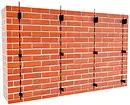
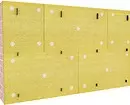
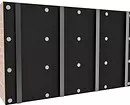

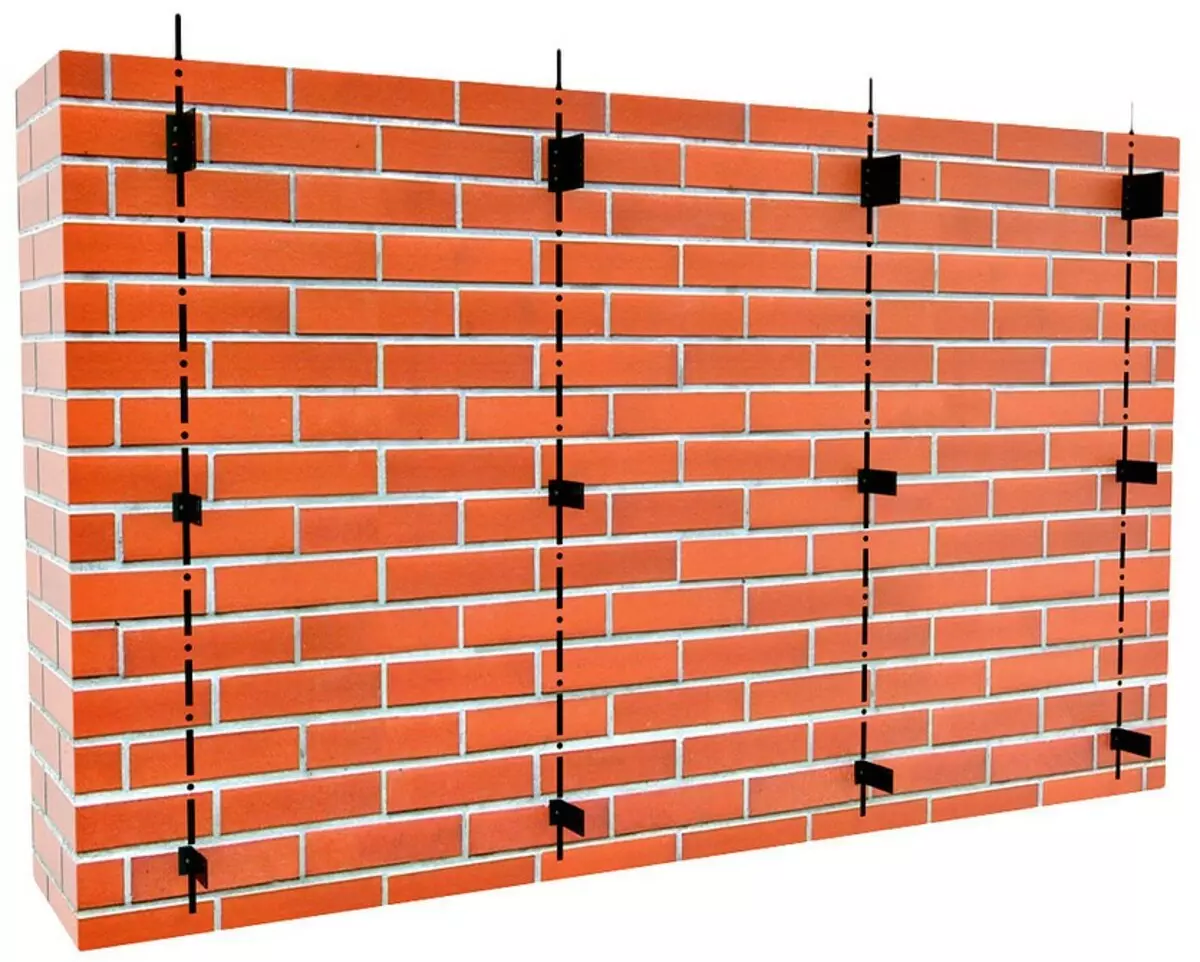
When the walls are insulated from any material, first the brackets for the root
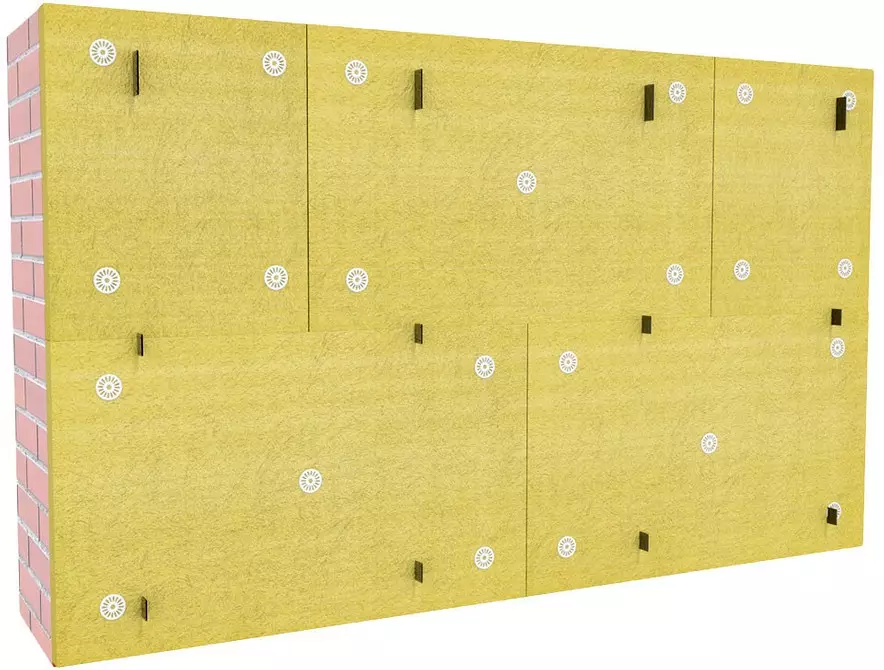
Then - using plate dowels - insulation plates
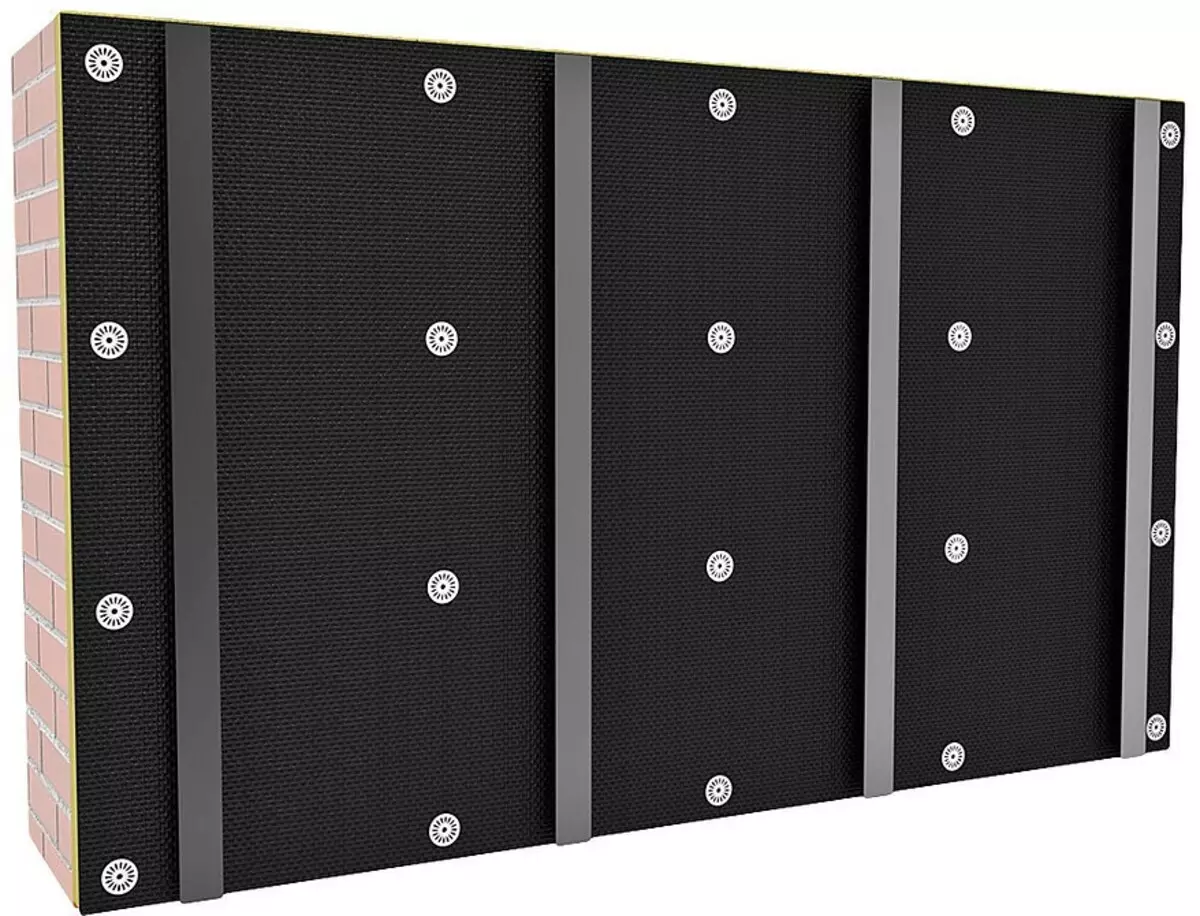
In this case, the brackets pass through the insulation. Next, the surface is tightened by hydraulic protection and install bars
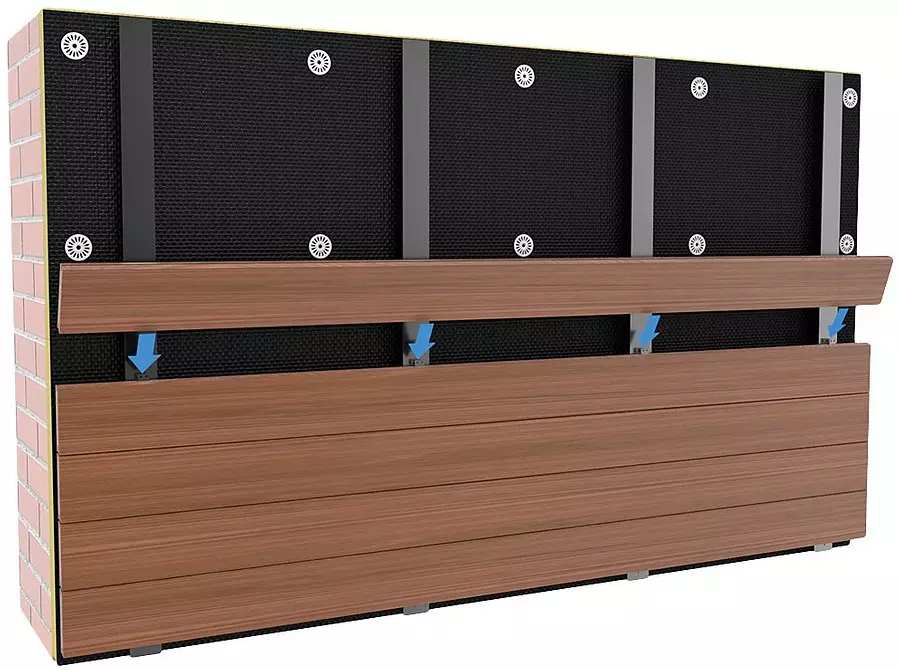
Installation of plaquena starts from the lower element, which is thoroughly aligned horizontally
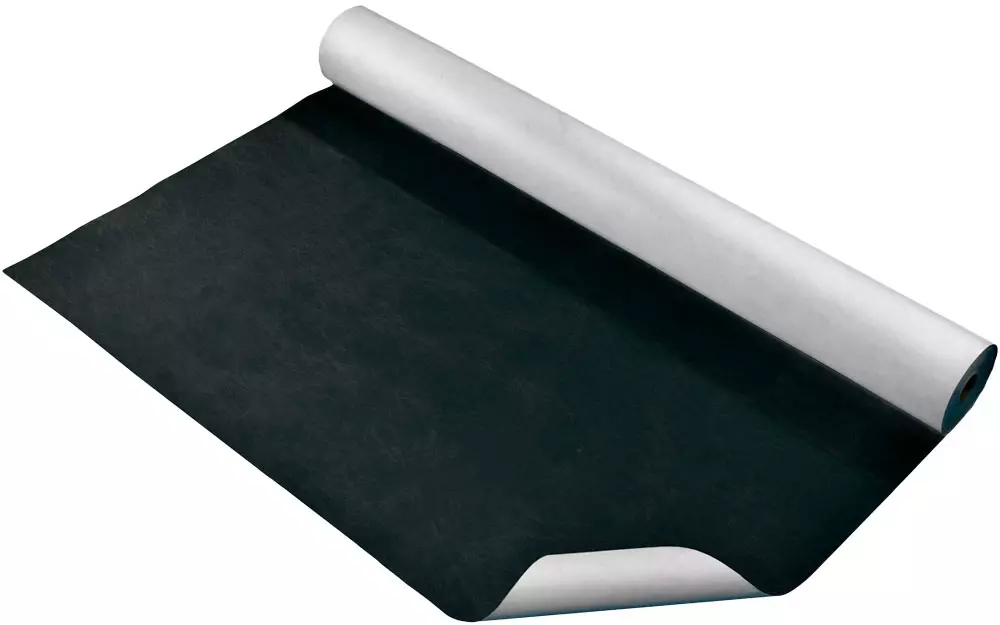
Photo: DuPont.
The Wheel Facade places specific requirements for the maintenance: and windproof, and the dohkels must be dark and have increased resistance to atmospheric influences
Planken sheathing
| Benefits | disadvantages |
|---|---|
| Unlike traditional lining or imitation logs and timber (blockhaws), it is not intimidated at moisturizing and does not breathe in the heat. | It does not provide one hundred percent protection of vapor insulating material from UV rays and random ignition. Therefore, it is required to use expensive light-resistant non-combustible waterproofing materials. |
| Provides the most efficient ventilation of the insulation in the hinged facade system and the frame wall. | Does not reduce air permeal and does not increase the heat transfer resistance to the fencing. |
| The lifespan service reaches several decades - this is facilitated by a four-sided impregnation and / or the application with a resistant to rotten rotting, as well as the absence of narrow slots and pockets, where moisture would be stuck. | The high price of plaquena itself, fasteners for it, as well as services of qualified installers. |
| The mounting system makes it easy to replace individual damaged objects. | |
| Due to the alternation of the rails and dark gaps of the facades acquire "depth", look elegant and underlined modernly. |
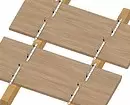
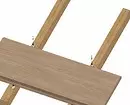
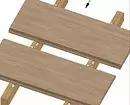
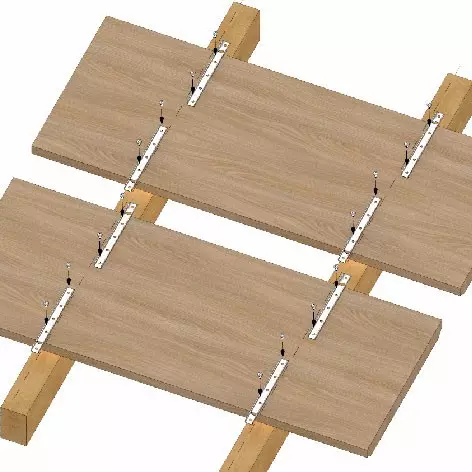
When installing, first to the wrong side of the slats screw the plates by placing the latter in checker
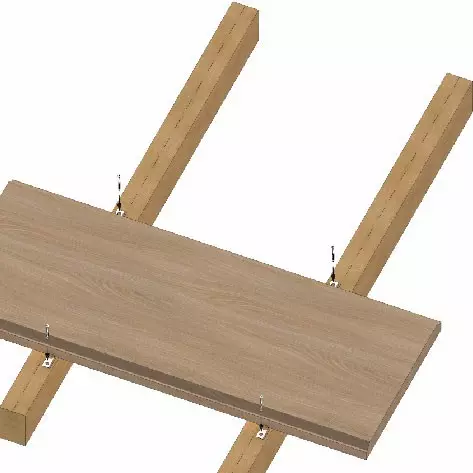
Next fasten the planks to the doom
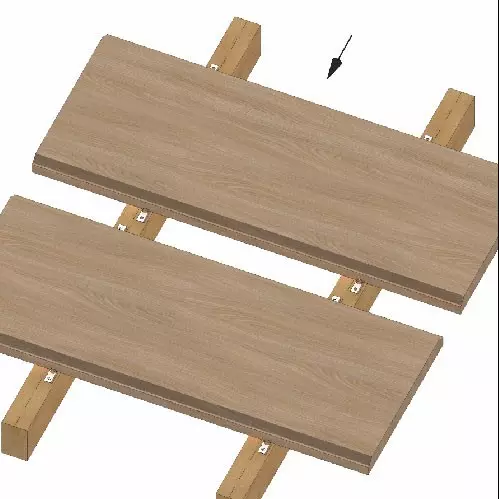
Galvanized plates are suitable only for slats with a beveled edge, completely hiding clearances. It is better to purchase products covered with polymer enamel of dark color: they are universal and durable
Cost of Planken
| Wood breed and timber variety | Edge type | Thickness, mm. | Price, rub. / M2 |
| Larch, variety AB * | Straight | 22. | from 1 250. |
| Larch of the grade "Extra" and "Prima" ** | Beveling at 60 ° | 27. | from 1 450. |
| Ash, grade a | Straight with groove | fourteen | from 2 400. |
| Cedar Siberian (Cedar Pine), variety ab | Straight | sixteen | from 1500. |
| DPK. | Straight with groove | 10 | from 1,700 |
| Fir firographed | Beveling at 60 ° | 25. | from 1800. |
** Complies with the "selected" variety according to GOST 8486-86: defects are practically absent.


